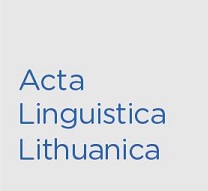Slavizmai veiksmažodžiai ir slaviškos šaknies hibridai
Slavic Loan Verbs and Slavic-root Hybrids
Author(s): Anželika SmetonienėSubject(s): Language studies, Theoretical Linguistics, Historical Linguistics, Baltic Languages
Published by: Lietuvių Kalbos Institutas
Keywords: verb; Slavism; hybrid; loanword; suffix;
Summary/Abstract: Slavic loan verbs are usually integrated into the Lithuanian language in accordance with certain rules. However, some Slavic-root loanwords of the 16th–17th century texts of the Grand Duchy of Lithuania contain suffixes that do not have analogies in the Slavic languages or Slavic suffixes are not integrated according to the usual model. Common- root words with regular suffixes are recorded in the same texts too. A part of Slavic root verbs do not have an underlying borrowed word in the Lithuanian language; yet another part of irregular Slavic-root verbs can be explained by the process of derivation in the Lithuanian language (for example, farbuoti, -uoja, -avo ‘to paint’ ChNT 404 : farba paint, colour’ SD1 31 < Polish farba ‘colour, paint’; Ruthenian фарба ‘paint’; plg. farbavoti, -avoja, -avojo ‘to paint’ DP 383, ChNT 25 < Polish farbować ‘to paint, to colour, to cover with paint’; Ruthenian фарбовати ‘to paint’). The article presents both groups of these Slavic-root verbs and the problem of their formation.
Journal: Acta Linguistica Lithuanica
- Issue Year: 2016
- Issue No: 74
- Page Range: 68-88
- Page Count: 21
- Language: Lithuanian

